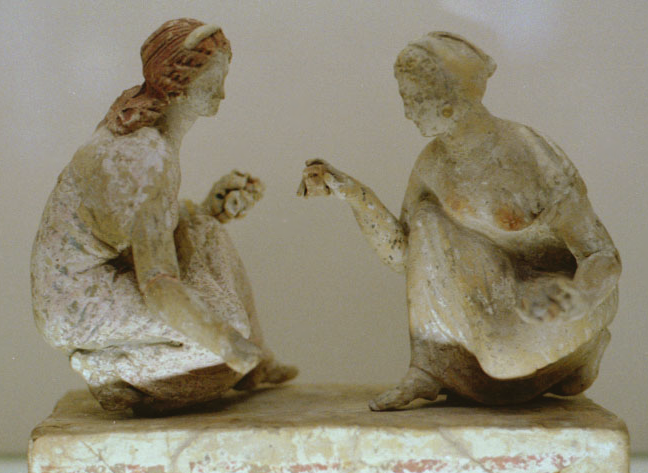
CLST 295 / WSGS 295:
Women in the Classical World
Fall Semester 2011
Dr. Jacqueline Long


|
CLST 295 / WSGS 295:
|

|
 Strategy:
think of specific passages that illustrate important points, so you
can back up your arguments with concrete evidence on the
test. Be sure you explain clearly how the passage helps
demonstrate your point. Helpful elements: What does it say? What does that mean?
Why does it mean that? How do you know? Strategy:
think of specific passages that illustrate important points, so you
can back up your arguments with concrete evidence on the
test. Be sure you explain clearly how the passage helps
demonstrate your point. Helpful elements: What does it say? What does that mean?
Why does it mean that? How do you know?
|
 Apology and
reassurance: this list looks long because I'm
trying to think of as many possible dimensions of study in our material
as I can -- and succeeding! What I'm really trying to do is to remind
you of possibilities and to encourage you to open the doors of inquiry
wide to your own interests. Apology and
reassurance: this list looks long because I'm
trying to think of as many possible dimensions of study in our material
as I can -- and succeeding! What I'm really trying to do is to remind
you of possibilities and to encourage you to open the doors of inquiry
wide to your own interests. |
 General-purpose
reflection: We are about about societal
and cultural understanding, not memorization of minutiae. It is convenient to be able to
identify major figures swiftly, by name, but it is far, far more important to be able
to recognize and understand (and demonstrate your knowledge and understanding by explaining
clearly) how details of our sources, the actions and relationships evoked in them,
and characteristic associated imagery, reflect concepts and values relating to women
and gender in the Classical world. General-purpose
reflection: We are about about societal
and cultural understanding, not memorization of minutiae. It is convenient to be able to
identify major figures swiftly, by name, but it is far, far more important to be able
to recognize and understand (and demonstrate your knowledge and understanding by explaining
clearly) how details of our sources, the actions and relationships evoked in them,
and characteristic associated imagery, reflect concepts and values relating to women
and gender in the Classical world.
|
| Loyola Homepage | Department of Classical Studies | Find Loyolans | Loyola Site Index |

Revised 16 September 2011 by
jlong1@luc.edu
http://www.luc.edu/classicalstudies/